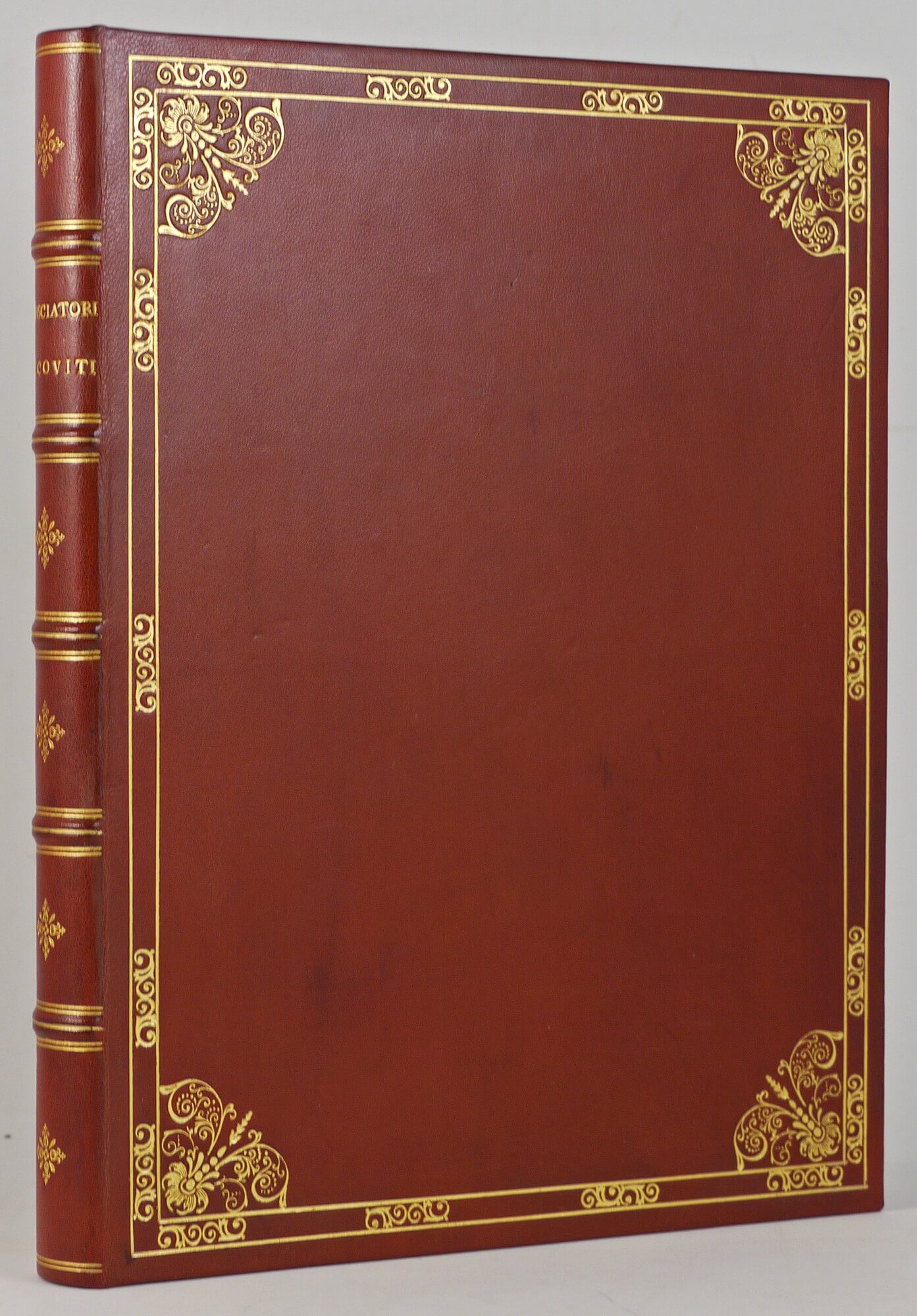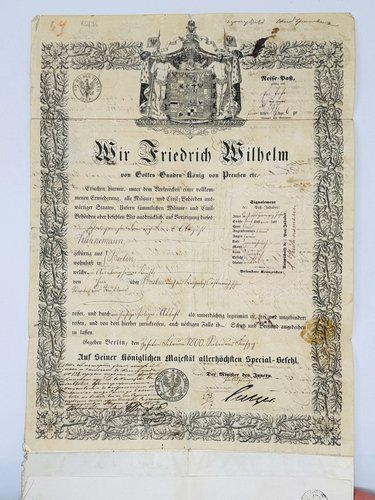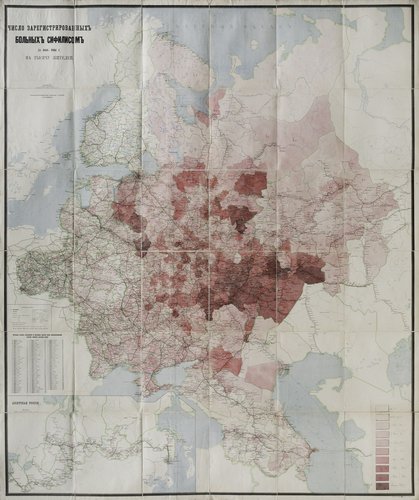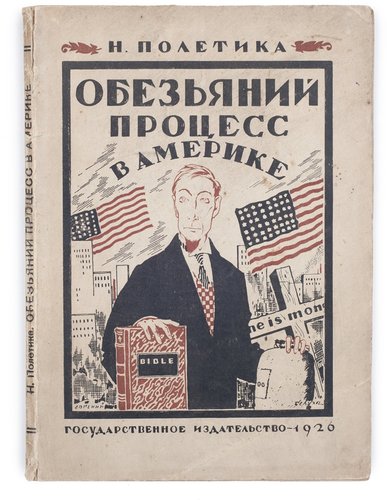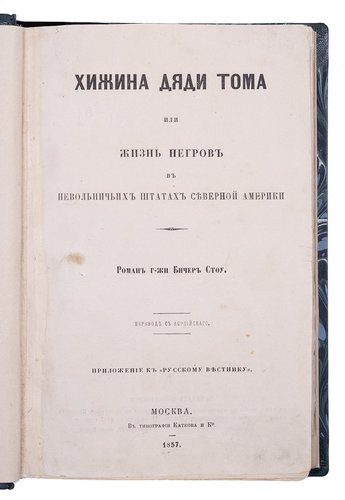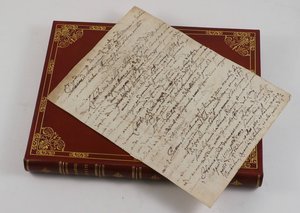

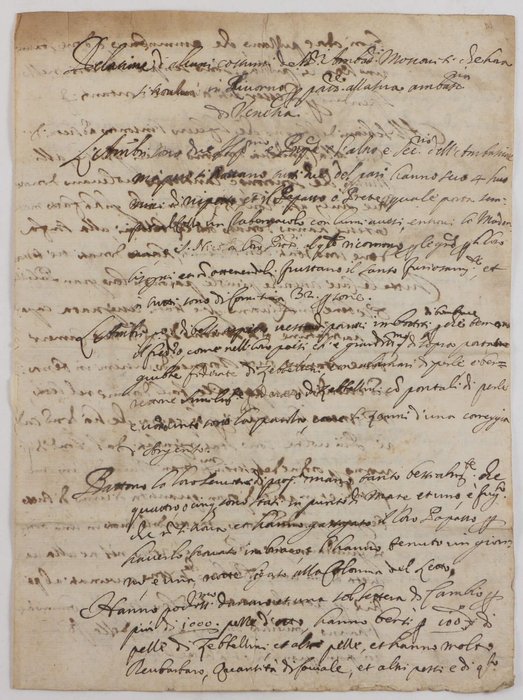
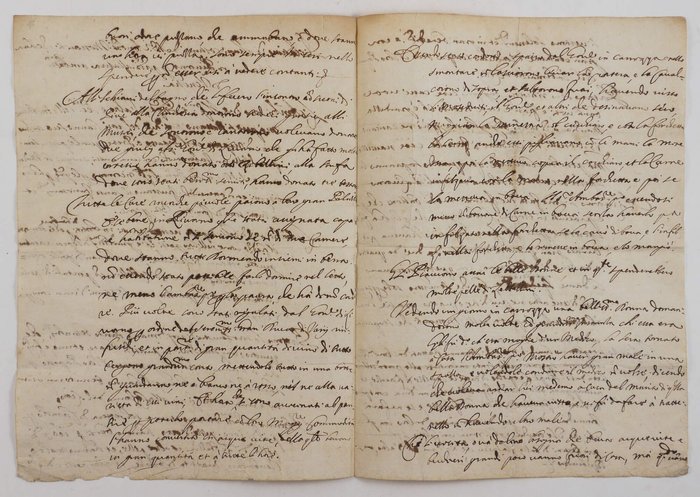
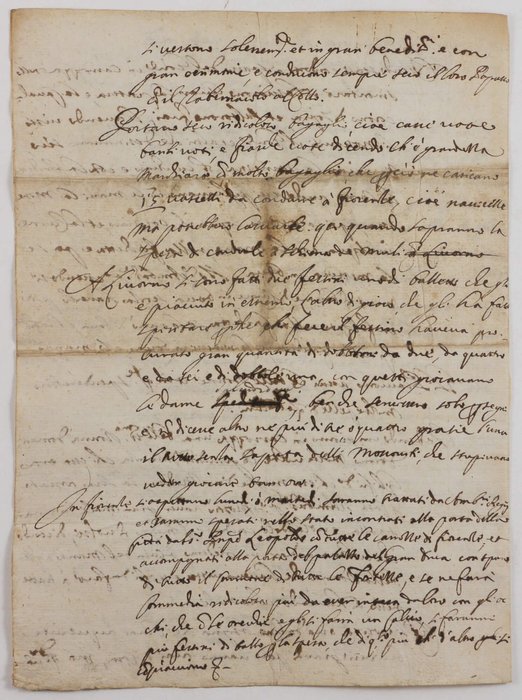
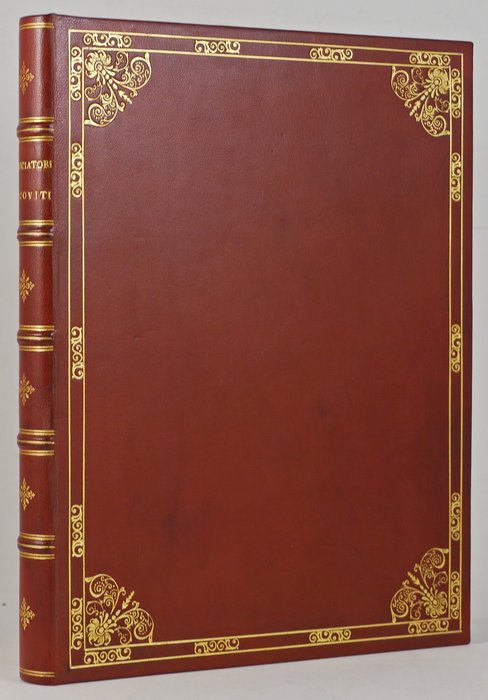
#MB5
Ca. 1656
Quarto, ca. 27x19,5 cm (10 ½ x 7 ¾ in). Four pages; brown ink on cream laid paper with fleur-de-lis watermark, written in a legible hand. Paper aged and slightly faded, with fold marks, but the text is still bright and easy distinguishable. Beautiful period style crimson elaborately gilt tooled custom made full morocco clamshell box with cloth chemise. The letter in very good condition.
Remarkable and Very Important Primary Source for Russian-Western European relations in the 17th century. This is a very important anonymous letter: "Curiosissimi Costumi de’Sig.i Ambasciatori Moscoviti, che ora si trovano in Livorno per passare all’Ambasciata di Venezia." According to the historians who worked with two other known copies of the letter (see below: Attribution of "Relatione d’Alcuni Costumi") it was written by a first-hand witness of the embassy, somehow involved with it, most likely between the 19th and 23rd of December, 1656. The written dialect of the letter’s language indicates that the author was a common person from Livorno, possibly of Sicilian origin. The letter vividly describes the Muscovite diplomatic delegation, staying in Livorno on its way to Venice in the winter of 1656. It was an official embassy to the Doge of Venice from the Russian Tsar Alexey Mikhailovich (1629-1676) sent in 1656-57 and headed by the Pereyaslavl governor Ivan Ivanovich Chemodanov (before 1618 - after 1657) and Deacon A. Postnikov. The goal of the embassy was to strengthen political and commercial relations with Venice, to negotiate the joint struggle against the Turks, to give Venetians the permission to trade in Archangelsk, and to borrow money from the Doge. A small "side task" was to: "to sell a hundred poods (1600kgs) of rhubarb and some sable furs for a thousand roubles." Overall the embassy didn’t achieve its goals as it didn’t manage to get the money from the Doge and to successfully sell the stale rhubarb and the sable furs (some of which were damaged during the voyage to Italy and some were sold to feed the embassy itself).
The embassy left Venice in March 1657 and went back to Russia through Switzerland, Germany and Holland. In spite of a lack of diplomatic skills, Chemodanov’s embassy left its trace in history. Its members became the first Russians to travel to Italy by sea, around northern Europe. They left Archangelsk on the 12th of September, 1656; passed the "Northern Nose" (North Cape), the "land of the Danish king," "Icelant, or Icy island (Iceland)," "the lands of Hamburg and Bremen," Scotland, Holland, "possessions of the English King," French and Spanish lands - "all those countries we passed from the left," and arrived in Livorno on the 24th of November the same year. During the voyage they suffered from storms in the Atlantic, when most of the state goods were damaged. The embassy’s appearance in Italy was met with great interest and curiosity; the official relations from both the Russian and Italian sides noted crowds of people accompanying the Muscovites wherever they went. Our letter "Relatione d’Alcuni Costumi" reveals what impression the Russian diplomats made on the Italians, e.g. "they are dressed in cloth of cotton wool as they are afraid of cold, which is very common in their country"; "they beat their servants with their own hands, and so brutally that four of five of them was on the verge of death, and one ran away and is still not found"; "they have sable skins for 100 thousand skudi and also a big amount of rhubarb, caviar and salted fish, and it stinks so much, that people get sick, and where they were for one hour it stinks afterwards for twelve hours.
"The Muscovites often seemed barbaric to the inhabitants of Livorno, as they all slept together, "and the Ambassador with them too, as he was afraid to fall off the bed"; they liked wine, but "put it all in one barrel, not distinguishing whether it is white or red or any sort of wine"; when the Governor took them around the city in a carriage, local people were astonished to see that the Muscovites didn’t open the doors, but climbed over them. There are also descriptions of their table manners which indicate that the Muscovites didn’t know how to use forks, also descriptions of how balls and festivities amused them, how "all small houses seemed to them as Gran Palazzos." Amusing also is the note that the Muscovites liked "Belle Donne" a lot, and spent many sable furs on them. A separate story describes how the chief Ambassador got attracted to the wife of a local doctor and tried to get her attention. The letter concludes with a note of the embassy’s coming departure to Florence, where they will be met as Royal ambassadors, and "comedia redecolosa" and that a big feast will be given in their honour, as "they like it more than anything else." Attribution of "Relatione d’Alcuni Costumi": There are two other known copies of "Curiosissimi Costumi," the older one is found in the Vatican Library (Biblioteca Apostolica Vaticana) as a part of "Codex Vaticanus Latinus" № 8891. It was first published in printed form in 1890 as a part of "Spicilegio Vaticano di Documenti Inediti e Rari, Estratti Dagli Archivi e Dalla Biblioteca della Sede Apostolica (Roma 1890, p. 381-383). The editor of the book, Monsignor I. Carini attributed that the Vatican letter was written in the middle of the 17th century by a first-hand witness of the Muscovite Embassy. Based on the written dialect of the letter’s language, Carini attributed the author as one of Livorno’s common people, a Sicilian by origin. The second of the two other known copies of "Curiosissimi Costumi" is deposited in Russia, in the archive of the Saint Petersburg Institute of History of the Russian Academy of Sciences. The text of the letter is included in the Italian manuscript collection titled "Storie Diverse." Soviet historians also published a printed version of their copy of the letter and thoroughly analysed it (see special articles by S. Anninskii, 1934, and I. Sharkova, 1972); The Saint Petersburg copy was attributed to be written slightly later than the Vatican copy, at the end of the 17th or in the very beginning of the 18th century. A thorough analysis of the texts of our letter and the Vatican and Saint Petersburg copies reveal several minor differences between all three, but also show a strong resemblance between our "Relatione d’Alcuni Costumi" and the Vatican copy. They are very similar in regards to the completeness and spelling of the text, whereas the Saint Petersburg copy often has some words replaced or removed, and also has spelling patterns different from the Vatican and our copies. This allows us the to state, that our copy was written at the same time with the Vatican copy or close to it. It’s remarkable, on the other hand, that the text of our copy is more extensive, than the Vatican one: there are additional lines in several places supplementing the contents of the Vatican copy. It could mean either that our copy is earlier - making it the earliest known copy of "Curiosissimi Costumi," or that the author of our copy knew more about the events described in the letter, and decided to enrich it with more details.
Bibliography: [Ambasceria Russa in Italia] / [Ed. By I. Carini] // Spicilegio Vaticano di Documenti Inediti e Rari, Estratti Dagli Archivi e Dalla Biblioteca della Sede Apostolica. – Roma 1890. – P. 376-383. [Anninskii] Аннинский, С.А. Пребывание в Ливорно Царского посольства в 1656 г. (Впечатления иностранца) // ИРЛИ. Сборник статей, посвященных академику А.С. Орлову. – 1934. – С. 201-207. [Kazakova] Казакова, Н.А. Статейные списки русских послов в Италию как памятники литературы путешествий (середина XVII века) // Труды Отдела древнерусской литературы. — Л.: Наука. Ленингр. Отд-ние, 1988. – T. XLI. – С. 268-288. [Liubopytneishie nravy…] Любопытнейшие нравы господ послов московских, которые находятся теперь в Ливорно, проездом в Венецию / Публ. И перевод К. Шварсалон // Русская старина, 1894. – Т. 81. - № 1. – С. 197-203. [Sharkova] Шаркова, И.С. Посольство И.И. Чемоданова и отклики на него в Италии // Проблемы истории международных отношений. – Л., 1972. – С. 207-223





